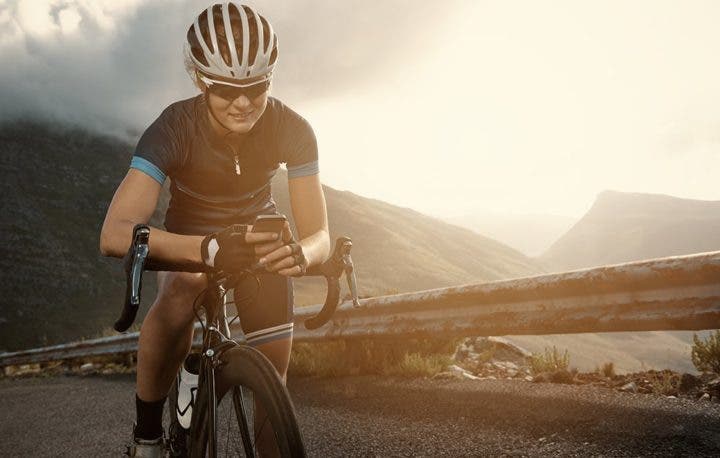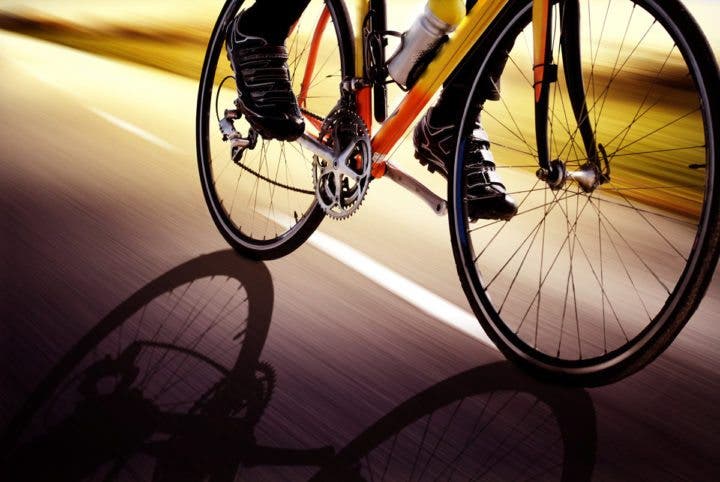Cycling is one of the most versatile sports that can be practiced. Not only does it greatly strengthen the muscles throughout your body — especially the back — but it is also an excellent stimulus for developing agility and hand-eye coordination. And believe it or not, the wonders don’t end there: did you know that you can lose an immense amount of calories practicing this sport? You may have imagined it.
However, quantifying the number of calories burned during a cycling training session is not always entirely straightforward. For that reason, here we bring you four recommendations to measure the calories you consume while cycling .

How to measure calories burned while cycling
1. Be honest about your weight
Honesty is the best policy, right? Or at least, if you want your bike computer to accurately count the calories you burn, yes. But why? The answer is pretty straightforward. The energy it takes for a 90 kg man to cycle four hours is radically different from what a 55 kg woman would expend doing the same time.
Your age, gender and height significantly influence the calculation of calories , especially if those are the only parameters that your computer’s algorithm has to work with, taking into account that you are not using a heart rate monitor or a power meter.
When creating the profile that your electronic device will use to calculate the approximate amount of calories burned, you must be as honest as possible, not only with the weight, but with all the information. The more accurate the numbers you add, the more accurate the numbers you will get.
That also means that you should update your profile when you gain or lose a substantial amount of weight.

2. Use a heart rate monitor to measure your heart rate
One of the most common misconceptions regarding cycling is that most believe that you should only invest in a good bike. However, and although it seems that the accessories are pure vanity, it is extremely important to have the right complementary equipment. The investment may be expensive, but the results are unmatched.
The harder you try, the higher your heart rate and the more energy you expend, but can you really be aware of the exact amount? With a heart rate monitor synced to your bike , yes.
With this tool you will be able to obtain much more precise data than if these calculations were based only on your weight and training conditions. Plus, you can also test your maximum heart rate and put that number on your profile for an even more accurate caloric estimate.

3. Invest in a power meter
Can it get even better? Yes, and by far. For the most accurate calorie counting on your routes, use an energy or power meter.
This tool calculates the work you are doing: you will get a number in kilojoules (kJ), a unit of energy that recognizes that the human body is not 100% efficient when it transforms the energy from your reserves into physical work, such as pedaling a bicycle. Power meters come on motors, cranks, pedals, and more.
Best of all, you don’t have to worry about making equivalency calculations between these two energy units, as they work in one-to-one proportions. So, if you did 500 KJ of physical work in your routine, you can feel pretty sure, with a 5 percent margin of error, that you burned 500 calories.

4. Keep your calories in perspective
Even if you have the most accurate calorie count possible, it’s important to keep those numbers in context, and especially when doing demanding workouts that fall short of net kilojoules. Remember that your body does much more physical work than what you count when you train cycling, so you must prepare it to face those loads.
You must be aware that the amount of kilojoules is not always proportional to the effect of the training you do, but it still generates certain bodily reactions.
So don’t automatically think, “ I only burned 300 calories, so I won’t eat anything afterward .” Your body will need energy to recover. Similarly, if you go around burning hundreds or even thousands of calories and eating the same thing, you need to know what you are consuming as much as what you are burning.
So, don’t look at the number of calories burned at the end of the bike workout and equate it to the amount of food you should or shouldn’t eat afterward. If weight loss is your goal, use those numbers to guide you, but keep them in perspective.

References
- Williams, P. How to Accurately Measure Your Calorie Burn on the Bike. For Bicycling. [Revised September 2016]
